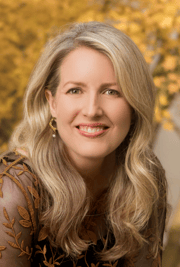
Communication is, at its essence, shared understanding. So it makes sense that, if you and your spouse have different understandings of key terms related to marriage, your communication will suffer.
Here’s some tips I often use to help couples in my counseling practice bridge the communication gap. Try it and see how it works for you and your partner.
Working as individuals and without collaborating, write a list of aspirational statements about your marriage, as if they were already true. Don’t worry about what you think your spouse will write, or about what he or she may think about the content of your list.
Here’s an example of items you might include in your list:
-
- We resolve conflict in ways that leave our relationship stronger.
- We pray daily as a couple.
- We agree on the fundamentals of raising our children.
- We are partners in ministry.
After completing your individual lists, come together as a couple and share your lists. Then, borrowing from both of your lists, come up with a third “joint list” of aspirational qualities on which you both can agree. As you create this joint list, take ample time to discuss and define what keywords mean to each of you.
In doing so, you’re creating what many counselors call a Marriage Vision. Read your list aloud together daily, and take turns saying each item on the list. Be sure to discuss which items you personally would like to grow in achieving together. Also, be intentional about expressing appreciation for items your spouse has been working to achieve.
The great news is that each time you repeat this exercise, you’ll be reinforcing your own uniquely meaningful definition of important concepts, such as love, care, support, communication . . . and others, too.
You’ll also begin to envision the marriage you both want to have―a key first step to turning what is today into what can be tomorrow.
*(Exercise adapted from Getting the Love You Want: A Guide for Couples, by Harville Hendrix, Ph.D.)*
We hope these tips on creating a marriage vision can help you come together as a couple and bridge the communication gap.

This blog post was written by Kimberly Miller, MTh, LMFT.
Kim is the founder of Leading Wholeheartedly, a ministry that helps leaders tend to their inner lives, so that they can better serve others. She also founded Doing Good Well, a leadership development program for Christians in the Visual Arts. In addition to maintaining a private counseling practice, Kim speaks at conferences across the country, and also hosts soul-care retreats and workshops.
Kim is the co-author of Boundaries for Your Soul: How to Turn Your Overwhelming Thoughts and Feelings into Your Greatest Allies.
Prior to her work as a counselor, Kim was a campus minister with InterVarsity Christian Fellowship at Harvard University. She has also worked for social investment fund Root Capital, and for Agros International, where she helped design the Journey with a Village program, partnering start-up villages in Central America with funding partners across the United States.
Kim studied religion at Davidson College in North Carolina and earned a Master’s degree in Theology at Regent College in Vancouver where she was given the Award to an Outstanding Woman. She holds a Master’s degree in Clinical Psychology from Azusa Pacific University where she won the Dedicated to Learning Award.
Kim is certified in Internal Family Systems Therapy and Imago Relationship Therapy. Plus, she is trained in the Gottman and Prepare-Enrich therapy methodologies.
Kim is carrying on a family heritage of world-class counseling to represent the next generation. Her parents, Harville Hendrix and Helen LaKelly Hunt, created Imago Relationship Therapy and are New York Times bestselling authors of Getting The Love You Want and Keeping the Love You Find, among other works. Her aunt—teacher, and broadcaster June Hunt—is the founder of the international biblical counseling ministry, Hope For The Heart and is the author of more than a dozen books and a 100-volume Biblical Counseling Keys library that's been translated into 27 languages.
A Dallas native, Kim lives in Southern California with her husband, Ken, a government professor at Claremont McKenna College, and their daughter, Jenna June. Kim and Ken enjoy parenting, volunteering, gardening, spending time with friends and family, and extending hospitality at their home.
